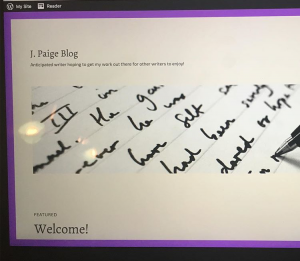Questions:
- When considering an audience, which do you think is more important: considering the various people interested in the ‘project’, such as students, faculty, the media, or community members, or focusing on ways to increase the circulation by focusing on how users find the ‘project’? If both are equally important, why?
- Of the three theories of audience, which do you agree with the most and why?
- Audience is an overdetermined term that can usefully be taught through concrete situations
- Through what we call a discourse community, audiences can influence the writer by influencing the language of the text
- Participatory audiences playable in the creation of writing and content
According to John R Gallagher, an algorithm is “a set of instructions for performing a task or solving a problem… Algorithms sort, dispute, and organize websites, writing, and content.” When thinking of algorithms, before reading this text, my mind jumped directly to the image below… a series of complex math problems that I couldn’t solve if my life depended on it. 
Though I do have a better sense of what an algorithm is, or what algorithmic audiences are, I still find myself asking the question that Gallagher asks in ” Writing for Algorithmic Audiences“: What role does the term audience play for writers?
Throughout the piece Gallagher answers this question, along with others, and uses Google and Facebook as examples of algorithms. Google uses algorithms to structure its search results and Facebook uses algorithms to drive its timeline. However, for students, it may be more difficult to circulate their works to different audiences. While a well-known YouTuber may be able to distribute their video to hundreds of viewers within seconds, a high school student would need to build an audience base before being able to do so. This is an obstacle that every writer will face when trying to reach their audience and therefore “we often draw on concepts of distribution and circulation, such as spreading writing within and across social media platforms” (Gallagher).
As a writer desperately trying to get published, I want my work to be distributed somewhere other than just my folder in Google Docs until that happens. Therefore, I created a blog over the summer in hopes of gaining viewers and an audience base. However, that in itself is an obstacle as I have yet to gain the audience base I’ve been looking for. I was able to connect to this text and thought immediately of my blog and tried to think of ways that I could get it to circulate more. Every other week or so, I post on Facebook that I put up a new blog post, and those are the weeks that I get the most views. However, if I don’t do that, my stats are staggeringly low, and therefore I may need to circulate the information better. (If you happen to want to check out my blog, click here!)
The text also mentions (and as I mentioned in my question above) that “students can consider the various people interested in their protest videos, (or for this purpose ‘project’), or may consider the various people interested in their ‘project'” (Gallagher). Connecting this back to my own work again, I have tried to consider the people interested in my work, such as family and friends, but circulate different kinds of material onto different forms of media as well. In participatory audiences, “the algorithm incorporates the responses, feedback, and reactions of readers” (Gallagher). When writing a blog, I always hope that people do provide their own feedback and opinions, but find it hard to actually get them to do so. The text also mentions this in terms of circulation, as commenting on different things will lead others back to other works as well.
While my blog may not be at the point I wanted to yet, I think after reading this text I will be able to improve it now that I am aware of different audiences, circulation techniques, and different forms of composition.
Word count: 664
Works Cited:
Gallagher , John R. “Writing for Algorithmic Audiences.” Computers and Composition, Science Direct , Sept. 2017, www.sciencedirect.com/science/article/pii/S8755461516300652?via=ihub.
